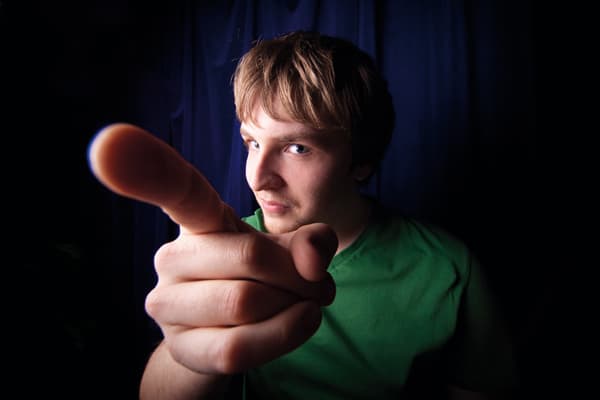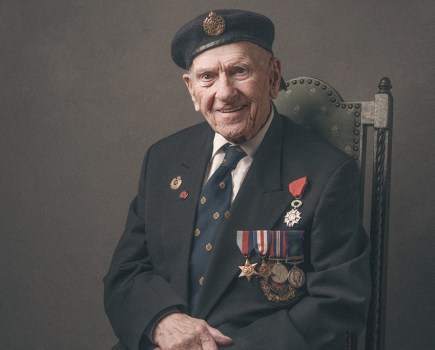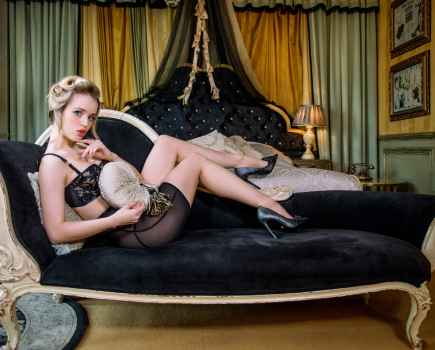Wideangle portraits: Using a wideangle Lens
Conventional photographic rules tell us that portraits are best taken using lenses with focal lengths between 50mm and 135mm on the 35mm format.
This is because the magnification of a 50mm lens on a 35mm full-frame camera closely replicates what we see in focus in the centre of our vision.
However, most portrait photographers prefer to use 85mm and 105mm lenses.
This allows them to stand further from the subject and give far less distortion than a wideangle optics, but without flattening perspective in the way a telephoto lens does.
This is not to say wideangle lenses cannot be used for portraiture. The unique properties of wideangle optics can be exploited to create eye-catching and dynamic portraits that stand out among more conventional ones.
Wideangle portraits: Getting in close

Image: The closer the subject is to the lens, the more distorted the shape of their head and the facial features will be. Combined with the right facial expression, this can produce humorous portraits
To take a head shot with a wideangle lens you will have to be very close to the subject.
Also, objects closer to the lens will appear distorted and relatively bigger than they actually are. Conversely, objects further from the lens will seem even further away still.
When taking a portrait this means the subject’s nose will appear to be very large, while the ears and sometimes the eyes will appear far smaller.
Obviously, these distortions mean wideangle lenses are inappropriate for most serious portrait studies. However, there are certain types of portraits that can use the distortion to great effect. For instance, the caricature effect created by a wideangle lens can be quite humorous, and for this reason it is not uncommon to see wideangle portraits of comedians.
If you are planning to take a wideangle portrait it is important to make the effect look as deliberate as possible, otherwise it will simply seem as if you have used the wrong lens. One way to do this is to have the subject pull an odd or exaggerated facial expression that complements the caricature effect that a wideangle lens creates.
Wideangle portraits: Shooting from below
A wideangle lens will help you capture a full-length portrait of a subject when in a confined space, and shooting a full-length portrait from below your subject’s waistline can make them look taller.
For example, the actor Humphrey Bogart was only 5ft 8in, yet on-screen he looks taller and more dominant. This is because he was nearly always filmed from a fairly low angle.
Combining a wideangle lens with a low angle exaggerates your subject’s height even more. Their feet and legs will appear larger and longer, and their body will converge upwards, making their limbs seem completely out of proportion to their head.
As when taking a standard head shot, it is best to try to make this effect look as deliberate as possible. Draw as much attention as you can to the subject’s now enormous feet, perhaps by having the subject wear a particularly striking pair of shoes, or pulling an exaggerated pose. I often ask the subject to walk towards the camera. Then, when they are close, I take an image at a point when one of their feet is lifted off the ground.

Wideangle portraits: Exaggerating for emphasis
Wideangle lenses can easily change the sense of scale to add emphasis to a particular feature or item. One of the most popular ways to do this is to have the subject stretch out their arms so their hands are close to the lens. The result will be hands that look huge, while the subject’s head appears a lot smaller and further away.
The trick is to make the hands look interesting. A simple thumbs up or pointing gesture is often a good starting point, or the subject could frame their face with both hands.
Another idea could be to have your subject hold up an object to the lens. For a portrait, it’s usually a good idea if the item relates to the person in the photograph. A writer or artist could perhaps point using a pen, pencil or brush. Similarly, a fellow photographer could hold up their favourite camera, or a goalkeeper could grip a football at arm’s length
Remember, it’s the person you are interested in, so make sure you’re focusing on their eyes and face, rather than their hands. Of course, a small aperture could give you a large-enough depth of field to keep everything in focus.

Wideangle portraits: Shooting from above
 With the camera above the subject’s head, the opposite effect to shooting from below is achieved. The perspective makes their head look huge.This is because their body converges down to a point at their feet.
With the camera above the subject’s head, the opposite effect to shooting from below is achieved. The perspective makes their head look huge.This is because their body converges down to a point at their feet.
This makes the subject look very childlike, as their head looks slightly too big for their body. Also, having them look up recreates the same perspective that we see when looking down on a child.
Wideangle portraits: Environmental portraits
The most obvious reason to use a wideangle lens when taking a portrait is to capture your subject’s surroundings. In particular, when shooting indoors, there is often little room to do this when using a standard portrait lens, so a wideangle optic is the only option.

When shooting a subject and their surroundings, keep the subject colse to the centre of the frame to minimise facial distortion
Once again, you can use the distortion created by the lens to exaggerate foreground objects so that they pop out of the picture, or to help frame the subject.
Top tips for wideangle portraits
- Look for interesting angles from which to photograph your subject. Extreme angles above or below your subject can make them look very small or like a giant.
- Use the distortion of the lens to emphasise important elements in your image.
- Don’t be scared of getting close to your subject. With a wideangle lens you will need to be much closer than you would with a standard portrait lens.
- Make sure it is obvious that you have used a wideangle lens deliberately, otherwise the image will just look horribly distorted.








